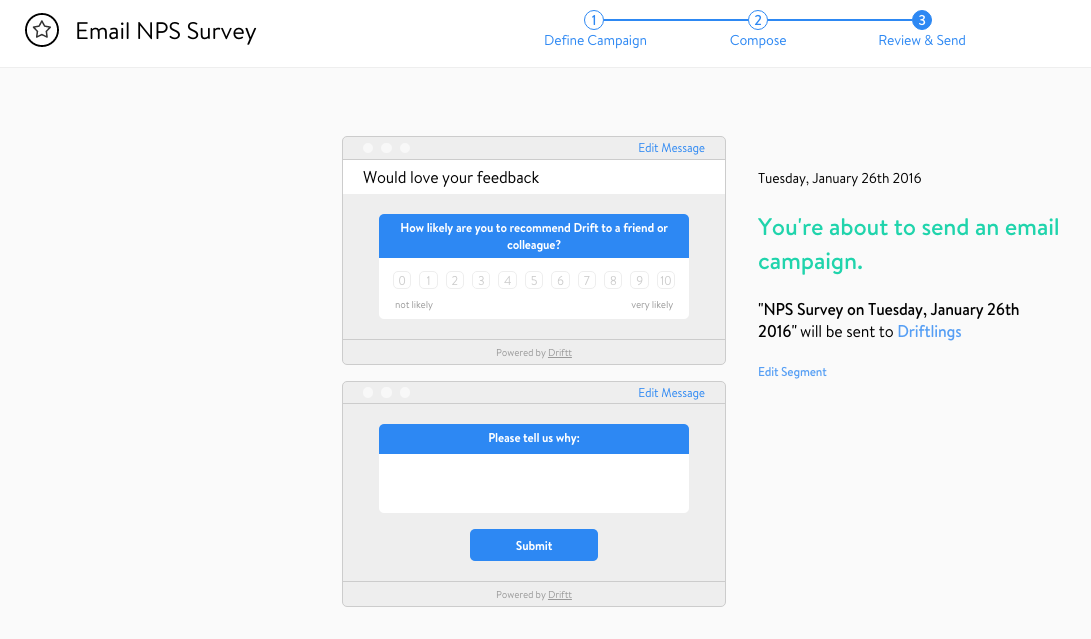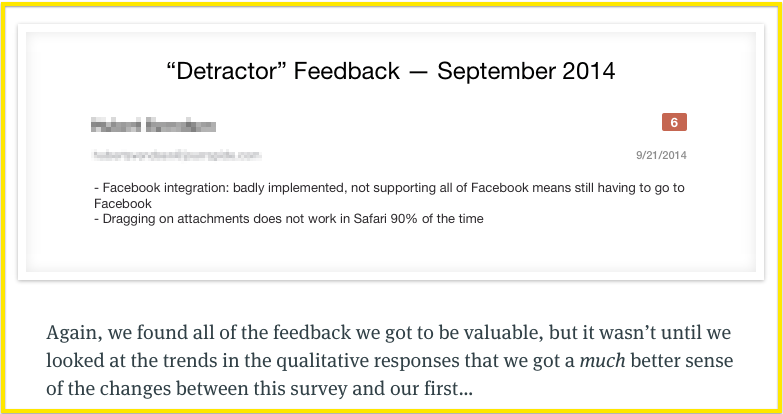
If you’re using Net Promoter Score to assess customer satisfaction, you’re in good company. It’s the easiest way to get customer feedback, as it’s the one true measurement of overall brand experience.
However, many companies struggle with how and when to conduct NPS research, and what to do with the NPS data.
The beauty of NPS is the one simple question, but it can be challenging to know what to do without context. How do you know what to do when you don’t know why a customer is a promoter, passive, or detractor? We have a few easy tips for how to find out more, and what to do once you have NPS data.
The Right Way To Measure NPS
- Set your philosophy on when you’ll ask, and automate it to be consistent. If you’re a software company, you’ll absolutely want to check right after the customer is onboarded to know if your onboarding experience needs improvement. After that, you know best when your customer should be asked. Keep it in a system that automates it based on triggers because if this is manual, you won’t have consistency. Satmetrix has a great infographic on understanding your customer journey and using that to set your triggers for assessing satisfaction.
- Augment the Net Promoter question. Add a simple open-ended question. This way you’ll capture more actionable insight when you know more about their selection.
Here’s how it looks in Drift:

Make it optional, but give your customers a chance to tell you why they think you’re great, or why they’re not in love.
What To Do With Your NPS Data
-
- Share the results in your company. The beauty of Net Promoter is that everyone in the company can participate in improving it. It’s the one true measurement, and so it’s the sum of every interaction with your brand. Everyone – from marketing, sales, support, services, finance, and especially legal…everyone is part of the brand experience. Sprint even ties 20% of its bonus structure for all employees to their NPS.
- Create the plan to improve. Once you have data and can tell which customers are promoters, passives, and detractors, segment these customers and set your intention for how to action this data:
- Promoters – although there are many things you can do with your raving fans, we simplify to two must-dos. 1 )Take the qualitative/written information about what they love, and pull it into your messaging. This will be full of differentiation, from customers mouths, that you should hang your hat on. 2) Ask them to write a review on a site like Product Hunt, G2 Crowd, clutch.co, capterra, or another. Once the review lives publicly, you can pull it into your website and marketing materials and provide social proof. Reviews are gold.
- Passives – Remember these are satisfied users, but they’re not enthusiastic. It’s not appropriate to ask this group for references. Your goal is to make them enthusiastic, contribute to retention, and earn the right for a reference. How do you make a passive a promoter? Segment them, and drive product usage & brand engagement. Engage them product roadmap feedback sessions. Learn everything you can, and when possible, make the necessary improvements. When you start paying unique attention to this group, set an aggressive goal for how many you’d like to make promoters and measure success.
- Detractors – You have more work to do with this bunch, but the goal should be the same as passives: Make them promoters. This group of customers can be a threat to your organization if their grievances become public. Your goal is to dive deeper and understand the source of their grievance(s), and address them. Groove opened up the Kimono on how they conducted NPS, and improved their score. They reference the qualitative information as critical for understanding what to improve. Here’s a shot of some of the feedback they received from a detractor:

- Share the plan for improvement, and assign ownership: Though everyone can impact improvement, you need to rely on your leadership team to drive the right priorities through everyone’s work. If the leaders own the plan, and are goaled on it, so will the people on their teams.
- Close the loop with the company, monthly. If you have to move to quarterly, that’s ok… but set the goal for monthly so the overall brand experience, and all of the things that make it up, is the focus. It’s important to capture NPS over time so you can track satisfaction across the customer journey, as well as your company’s journey.
To institute NPS in a meaningful way, take the right technical and tactical approach, along with the right process to improve, and make your team part of the resolve.



